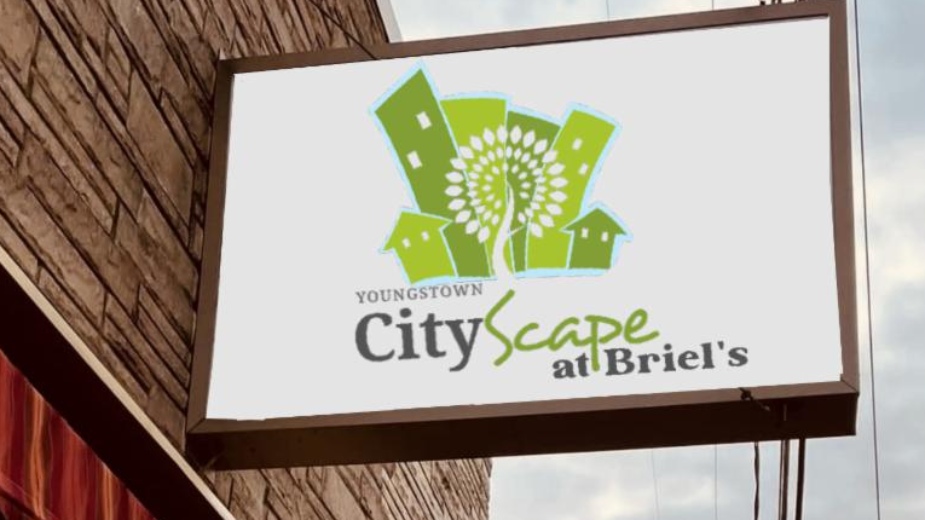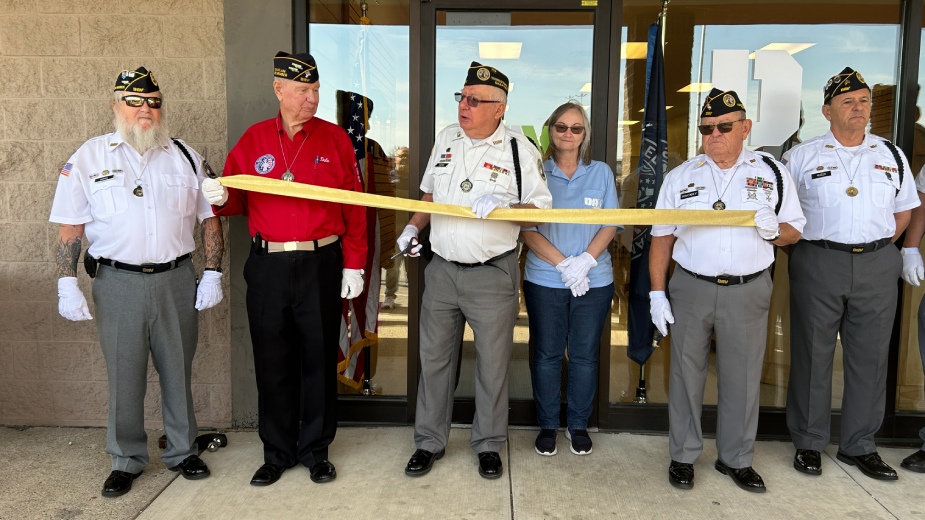Public Art Brightens Warren’s Future
WARREN, Ohio – There’s a house a couple of blocks northeast of downtown Warren. It’s sat empty for years and, in all likelihood, will be torn down in a year or two.
But between now and the demolition date, the house at 232 Vine Ave. NE will serve as an art installation, with 15 regional artists each taking over a room and putting in works that reflect Warren’s past, present and future.
“It’s not going be all peachy, aesthetically pleasing, beautiful things, but rather things that challenge everyone’s idea of what was here, what’s here now and what’s a realistic goal for the future. And how painful that process can be,” says Matt Martin, executive director of Trumbull Neighborhood Partnership.
The project, Occupied Warren, is a collaboration between TNP and the Fine Arts Council of Trumbull County. Artists began working on the rooms early this month and the installation is scheduled to open the first weekend of June.
“People tend to look at art that’s older as more valuable,” says James Shuttic, executive director of the arts council. “One of the attractions to the artist is that [Occupied Warren] is not permanent. … Everything changes. Nothing lasts forever. One of the draws is that the art and its destruction goes hand in hand with the community.”
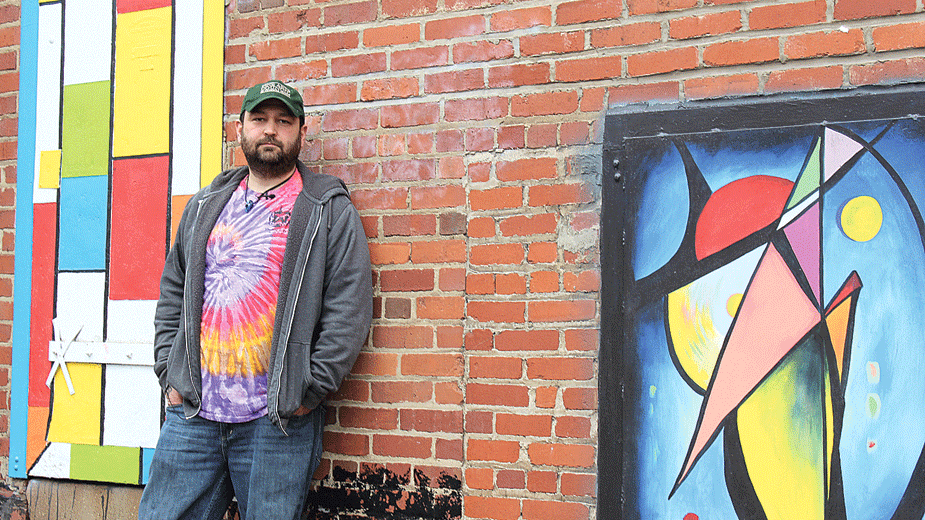 James Shuttic, executive director of the Fine Arts Council of Trumbull County, painted these pieces on the side of the Robins Theatre last summer.
James Shuttic, executive director of the Fine Arts Council of Trumbull County, painted these pieces on the side of the Robins Theatre last summer.
Since TNP was established in 2010, it has demolished dozens of houses across the city. It’s launched farmers markets and community gardens. Most of its work is tangible, but public art, something without a measurable metric of success, plays a role as well. Martin points to a conference he attended earlier this year where he discussed the murals funded by grants awarded to TNP.
“One young man told us, ‘It’s not even as complicated as everything you talked about. They’re just colorful.’ It improves the way people feel just by having more color,” Martin says. “How people feel about living here is just as important as the housing cost or whether the house down the street is vacant or there’s food access.”
Most of the artwork facilitated by Trumbull Neighborhood Partnership has been murals – it aims to do one a year, Martin says – and while that style is the most recognizable, there are projects as well. In 2017, the two groups supported vinyl wraps for bus stops around the city, including one that resembled stained glass windows. And several sculptures doubling as bike racks have been put up around the city as well.
“In the Garden District, the stone walls [using foundation stones from demolished houses] are something I’d consider public art, as well as some of the houses,” Martin says. “On the houses we board up, particularly in the Garden District, we decorate the boards.”
Public art in Warren isn’t limited to what TNP and the Fine Arts Council sponsor. Martin readily admits, “The difference between vandalism and art can’t be that the [Ohio Arts Council] gave a grant for it.” On Atlantic Avenue, for example, the front door of the shuttered Atlantic Beverages has been painted in bright orange and blue and covered in stars and ice cream cones with faces.

“There’s a lot more liberty and freedom within public art. There aren’t really rules for the artist,” Shuttic comments. “It cuts down the barrier between the artist and the viewer. When art’s showcased in a gallery or museum, there has to be access. [With public art], it gets taken directly to the community.”
In David Grohl Alley just off downtown, artist Aaron Chine has put up several pieces, including the metal music notes along the western end and the large banner piece on the back of the National Fire and Water Repair building.
He was also the artist to do a mural for TNP, putting up a work on a vacant building near the corner of Vine Avenue and Porter Street.Chine’s works include several murals for area high schools, such as the Raider logo he painted at Warren G. Harding High School last summer.
“It’s a sense of pride. You’re not just driving around looking at boarded up houses and vacant buildings,” he says. “You’re seeing art. You see people doing the art so you know there are people in the art community. It’s this living, buzzing, thriving thing.”
In the scope of Warren’s revitalization, art’s role has several purposes. As Martin and Chine say, it brightens up neighborhoods, breaking up the monotony of browns and grays in blighted areas. And it connects residents to the work being done around them.
When the “Welcome to the Garden District” mural on Park Avenue was painted in 2015, Martin says he was concerned about a young man who lived not far from the site.
“There was a neighborhood kid who’s the kid who would tag a mural,” he says. “But he spent a lot of time working with [painter Amy Novelli] on it. So now he isn’t going to tag it and he’s going to make sure none of his buddies do either.”
When the Fine Arts Council and Trumbull Neighborhood Partnership decided to put up a mural, Shuttic continues, the groups work with those living near the mural to determine its content.
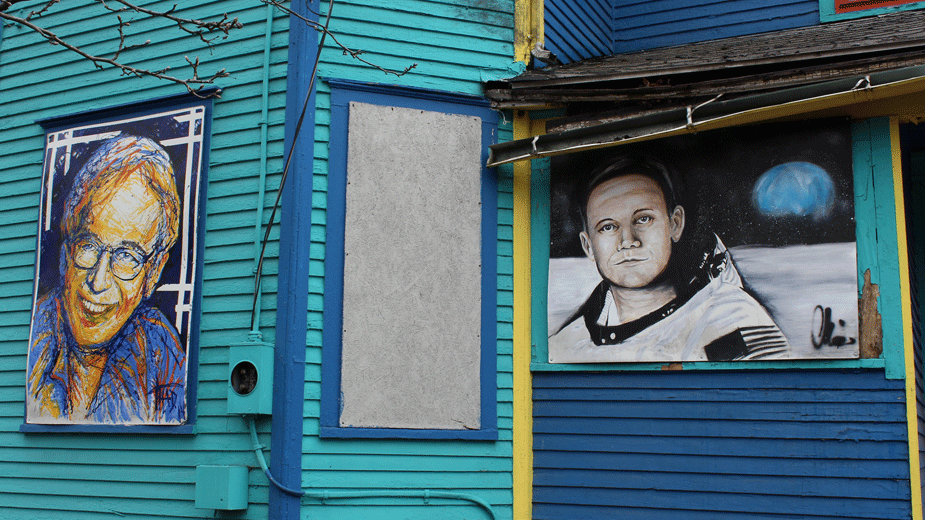 “The Painted Lady” is covered with portraits of famous Ohioans.
“The Painted Lady” is covered with portraits of famous Ohioans.
“If you can form a connection early on, if the neighborhood can see the process and has input, it means that much more to them. They’re that much more invested,” he says. “We try to be open and receptive because what artists are trying to tell is the story of the community.”
The main efforts of TNP, Martin says, have always been dealing with Warren’s blighted housing stock and improving access to healthful foods.
What those have in common – and what separates them from the public art efforts – is they’re tangible. It’s easy to count how many vacant houses are demolished or tally how much people spend on fresh vegetables at a farmers market.
For Chine, who owns The Box Gallery in downtown Warren, public art is crucial in a city bouncing back, the same as dealing with empty lots, crime and food.
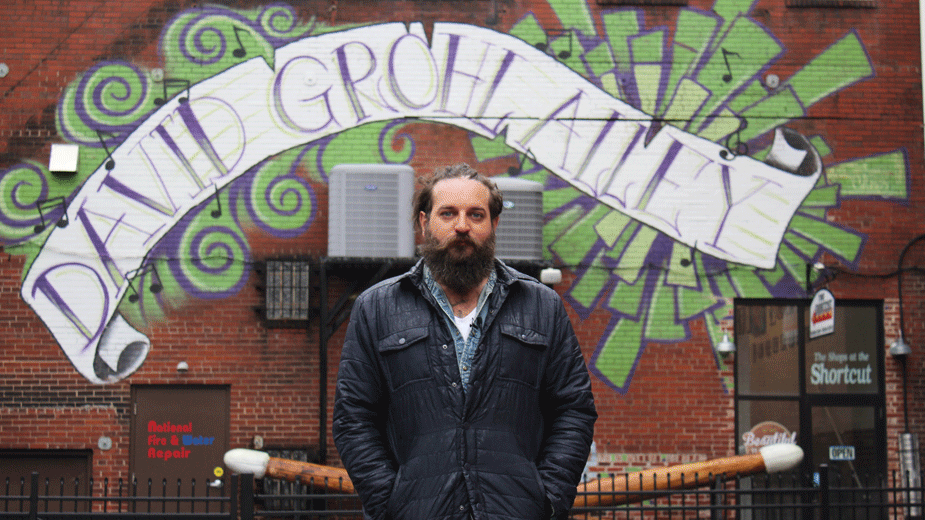 The Box Gallery owner Aaron Chine has done several public art works around the city, including the David Grohl Alley banner.
The Box Gallery owner Aaron Chine has done several public art works around the city, including the David Grohl Alley banner.
“It’s proven in other places that are similar to us that arts have helped revitalize the area,” he says. “Arts and entertainment, no matter where you go, are important because people want to be entertained. They want to be visually stimulated. They want to go places.”
TNP’s Martin says his organization could easily pass over supporting public art. Grants usually fund the projects.
Trumbull Neighborhood Partnership has few artists on its staff, and not all pieces are well-received.
“We could skip art entirely because we can’t measure it. But I can tell you that it’s hugely important,” Martin says. “It excites people. It’s a conversation starter. For the most part, people like the installations we do. And even when they don’t, we’re starting conversations about it, about what should go in the empty space.”
Pictured: Trumbull Neighborhood Partnership Executive Director Matt Martin says public art, such as the Garden District mural, is “hugely important” to Warren’s revitalization.
Copyright 2024 The Business Journal, Youngstown, Ohio.

